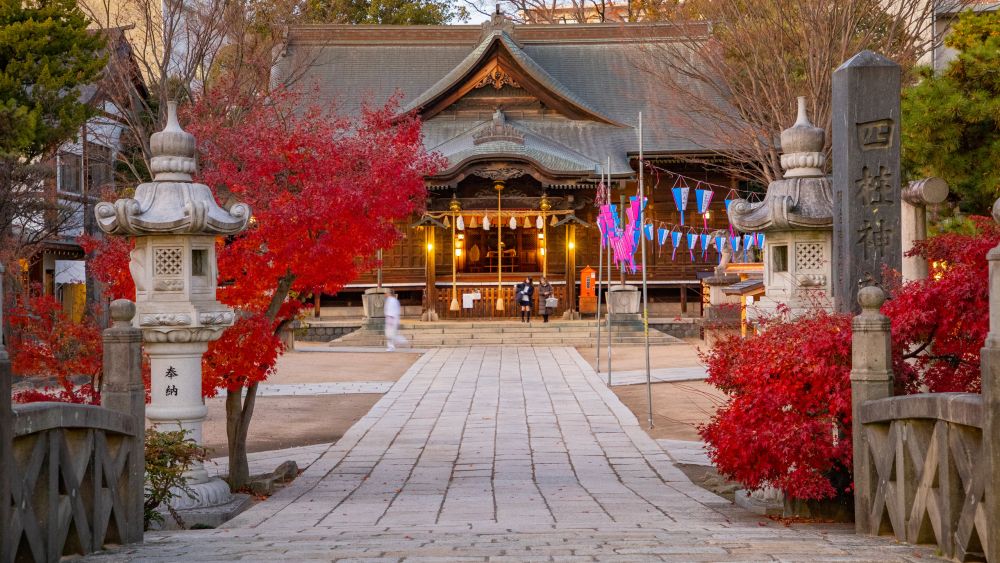

The Yohashira Shrine, located in the heart of Matsumoto city in Nagano Prefecture, Japan, has been a significant historical and cultural site for many years. Established in 1864, it is a relatively new shrine when compared to other ancient shrines in Japan. However, it has quickly become a revered place for locals and a popular attraction for tourists.
Yohashira Shrine is famous for its unique architectural style, which blends traditional Shinto motifs with a more modern aesthetic. This blend not only signifies the unity of past and present but also appeals to visitors who come to admire its distinctive look and peaceful atmosphere. The wooden construction with a prominent roof and the intricate carvings around the shrine contribute to its beauty.
The shrine has played a pivotal role in the local community, serving as a venue for various festivals and events throughout the year, most notably the Matsumoto Festival. During the festival, the area around Yohashira Shrine becomes a bustling hubbub of activity, with locals and tourists alike flocking to enjoy traditional performances, parades, and food stalls.
Over the years, the shrine has become an essential part of the city's tourism landscape. Walking through Nakamachi Street, a well-known preserved district with traditional storehouses, visitors often conclude their cultural tour at the Yohashira Shrine. Proximity to Matsumoto Castle, another major tourist site, has helped in bolstering the shrine's visibility among travelers.
Visitors are also drawn to Yohashira Shrine for the stunning display of cherry blossoms in the spring. The surrounding park, with its old trees and tranquil paths, provides a perfect setting for hanami (cherry blossom viewing) parties, adding to the seasonal appeal of the site.
In recent years, a trend towards cultural immersion and sustainable tourism has seen the shrine gain popularity among those wanting to experience Shinto traditions firsthand. Workshops and guided tours are becoming increasingly sought-after, offering insights into the art of Japanese crafts, calligraphy, and the spiritual significance of the shrine.
Yohashira Shrine has not only maintained its importance as a historic religious site but also as a testament to the city's dedication to preserving its cultural heritage. As Matsumoto continues to open up to the world, the shrine stands as a must-visit destination for those looking to delve deeper into Japan's rich traditions and history.